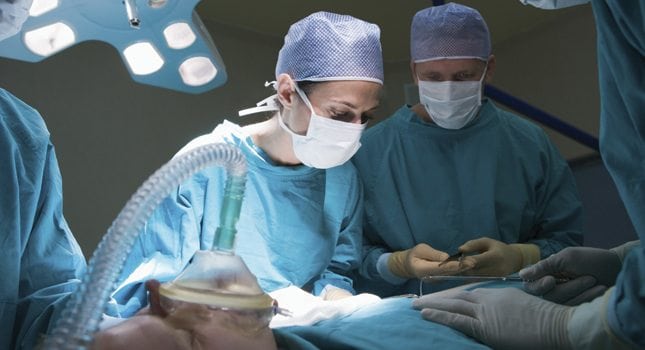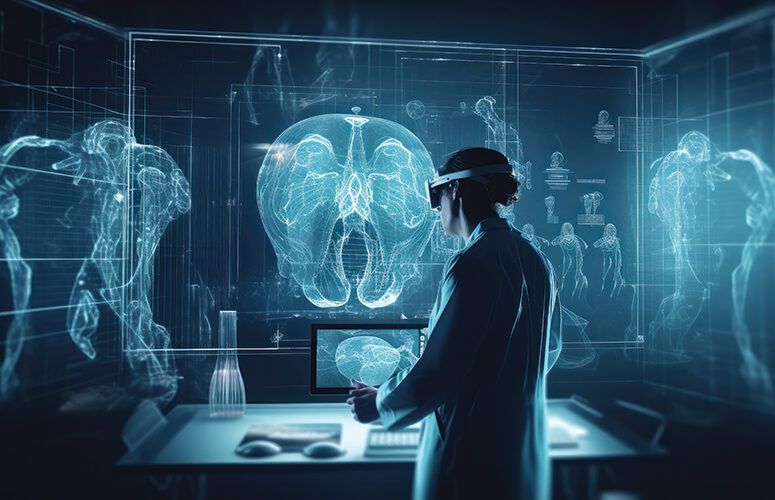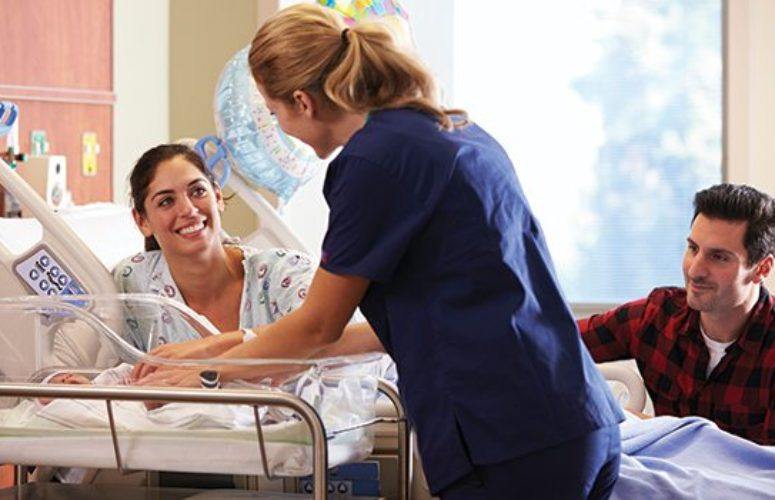
Hospital Technology
Anyone who thinks it’s necessary to go to New York City to get the most advanced medicine doesn’t know New Jersey’s hospitals.
By Colleen O’Dea, Contributing Writer On Jun 16, 2014From less invasive treatments for cardiac patients and highly technological surgeries for the uterus, to futuristic hand print access to patient records, the state’s hospitals are heavily investing in the latest and greatest medical treatments and devices.
“The new Virtua Voorhees is the absolute state-of-the-art in innovation,” says Richard P. Miller, president and CEO of Virtua, a network of hospitals and care facilities in South Jersey. “The innovation, the best of human ingenuity and technology, came at a $463-million price tag … so very worth it for what it now means to the community as we deliver the highest level of patient care.”
With new technological advances in many medical specialties coming as quickly as every few months, deciding how to spend limited funds can be a challenge. That’s especially true given that the state’s economic climate is still tentative and implementation of the Affordable Care Act has the nation’s health insurance system in flux. But when considering investments, New Jersey hospital officials have news that may surprise the cynical: Patient care trumps financial considerations.
“The major variable is whether it is going to affect patients positively,” says Dr. Joseph E. Parrillo, chairman of the Heart and Vascular Hospital at Hackensack University Medical Center (HUMC). “Secondarily, how difficult would it be to set up at your medical center?”
Parrillo says the fast pace of new medical technologies has made it necessary to establish a system for deciding which ones the hospital should embrace. At HUMC’s Heart and Vascular Hospital, that involves Parrillo and cardiac surgeons seeing the technology demonstrated and making judgments about whether new devices will help patients and prolong life.
HUMC was the first North Jersey hospital to embrace transcatheter aortic valve replacement (TAVR), because it is less invasive, allows for a quicker recovery and, for the first time, gives treatment to older patients – in their 70s, 80s and 90s. Prior to TAVR, open heart surgery with a cardio pulmonary bypass was the only way to replace an aortic valve that had narrowed due to aortic valve stenosis, a condition affecting roughly 1.5 million Americans. Many older people, including those with chronic lung disease, could not have that surgery.
With TAVR, the surgeon inserts a new heart valve using a catheter, guided by echocardiography. The chest does not need to be opened and patients can go home as soon as two days after surgery.
As of mid-April, HUMC had completed 155 TAVR procedures in 18 months, Parrillo says. Given Hackensack’s size and location, the hospital expects to have a large enough potential patient base to justify the new technology.
Jersey Shore University Medical Center in Neptune adopted TAVR last year and recently began using another new technology to treat heart problems, a subcutaneous implantable defibrillator, or S-ICD. It is a new way to provide a shock to the heart to combat potentially lethal arrythmias.
“Anyone in the electrophysiology community knew it was in development and was anxiously awaiting its approval,” says Dr. Ihab Girgis, director of electrophysiology at Jersey Shore. “It’s a marvelous advancement.”
Girgis says there are patients who need a pacemaker, but should have the more common device that puts leads into the heart due to an elevated risk of infection, because of anatomical difficulties or other reasons.
The S-ICD is placed about five inches below the skin near the heart. Rather than placing leads into the heart, the S-ICD uses a subcutaneous electrode that analyzes heart rhythms to sense abnormalities and delivers a pulse to stop an arrhythmia.
“Putting wires into the heart can cause many problems, particularly for young people,” Girgis says. “All this is eliminated by a leaderless system.”
He estimates that of about 100 defibrillator procedures a year, he will use S-ICD between 20 and 30 percent of the time.
Girgis says part of his job is to keep track of new technologies and help the hospital decide which ones to embrace. He says there are advances in electrophysiology about every six-to-twelve months, though not usually as “revolutionary” as S-ICD.
Meanwhile, Dr. Patrick Roth, chairman of the department of neurosurgery at HUMC, is excited that the hospital is planning to use robot technology to assist with spine surgeries. Lower back pain is “ubiquitous,” Roth says, affecting 80 percent of people at some point in their lives and 20 percent at any given time. HUMC does “a couple hundred” spinal surgeries a year and anticipates the robot will help improve accuracy and patient outcomes.
“It assists the surgeon,” Roth says. “You pick the start and finish points of where you want to put a screw and it will find a way to keep it in place.”
The robot system is expensive, costing about $800,000, Roth says, but the benefits are worth the price and the unit will ultimately prove to be cost effective. If the hospital gives final approval, HUMC would become the first hospital in the northeast to use the robot.
Last summer, Jersey Shore became the first hospital in the state to offer a new, minimally invasive treatment for uterine fibroids using a machine with a much more modest cost – between $15,000 and $25,000.
The price of the Acessa technology is “in line with every other electronic device” and not prohibitive, says Dr. Mark Martens, chief of Obstetrics and Gynecology at Jersey Shore, who performed the first Acessa procedure in the state along with colleague Dr. Jocelyn A. Carlo, an ob/gyn.
More than half of all women develop fibroids, benign growths on the uterus that usually occur during childbearing years, so there is a large pool of potential patients.
Until now, the treatment options for fibroids have been imperfect. Hysterectomy removes the uterus. Surgical mesh devices used to treat pelvic organ prolapse have caused problems. Uterine artery embolization has left some women unable to have baby.
Acessa is a laparoscopic procedure that delivers radiofrequency energy to destroy the fibroids. It allows a doctor to get rid of the growths while preserving normal function of the uterus. Patients typically go home the same day with little pain.
“The procedure itself takes three minutes,” Martens says. “There are two little cuts in the abdomen. Patients are in for an hour or an hour and a half to recover.”
Also on the cutting edge, Robert Wood Johnson (RWJ) University Hospital has embraced the latest Gamma Knife Perfexion technology, says David Fernandez, vice president of RWJ’s Cancer Hospital and Neuroscience Center.
“It is the gold standard tool to treat diseases of the brain,” he says.
RWJ built a state-of-the-art center to house its Gamma Knife surgery program about four years ago. Somewhat deceptively named, the Gamma Knife involves no cutting, but is radiosurgery, focusing radiation at specific areas to treat brain tumors, pituitary adenomas, Parkinson’s Disease and other disorders.
Dr. Shabbar F. Danish, director of functional and stereotactic neurosurgery at Rutgers Robert Wood Johnson Medical School and RWJ University Hospital, says the treatment helps patients in several ways.
“Physicians can target the tumor without affecting the healthy tissue that surrounds it,” says Danish, the only physician in New Jersey who is fellowship-trained in Gamma Knife radiosurgery. “The procedure is done on an outpatient basis and offers many benefits over traditional surgery: fewer side effects, lower complication rates, no incisions, fewer potential complications, shorter treatment and greater convenience.”
With a national reputation as “the flagship cancer hospital in the state,” RWJ attracts large numbers of patients from throughout the northeast, Fernandez says. Doctors there have performed about 500 Gamma Knife procedures since introducing the technology, with a return on investment of about $25,000 per case, or almost $6.3 million.
Earlier this year, CarePoint Health inaugurated its da Vinci robotic surgery system at Christ Hospital in Jersey City. The technology allows doctors to perform a variety of surgeries that need only one or a few small incisions.
The da Vinci robot at CarePoint Health – Christ Hospital, nicknamed “Mona,” is part of a larger initiative, backed by a $2.5-million investment, to respond to the growing healthcare needs of the region.
“We do a community needs assessment on a regular basis and we definitely thought the Hudson County community needed a minimally invasive surgery technique,” says Dr. Mark Spektor, president and CEO of CarePoint Health Bayonne Medical Center. “We are using it across multiple disciplines.”
The da Vinci Robot includes a magnified 3D high-definition vision system and tiny instruments that allow a surgeon to operate with greater precision, dexterity and control. The system transfers a doctor’s hand movements to those made by tiny instruments that work inside a patient’s body through the small incisions.
Virtua also uses the da Vinci system, having been named a Robotic Surgery Center of Excellence. The technology is just one aspect of a fully advanced hospital environment.
Bayonne is also piloting a new system that does not directly involve patient treatment, but can help improve care. PatientSecure is an infrared palm vein print reader that can identify patients and access their records quickly. It can speed up hospital registration and get faster and better treatment for those who come into the emergency room. In particular, if a patient is unconscious or otherwise can’t speak, but is in the system, PatientSecure will be able to identify him, his blood type and his medical history.
Spektor says the hospital has teams that discuss the availability of new technologies and whether to implement them, with an eye toward improving patient care.
“Our goal is to provide services to reduce the outmigration of people from Hudson County to other counties,” he says. “We want to give people the same access to technology as they could get in Manhattan.”
Related Articles:





